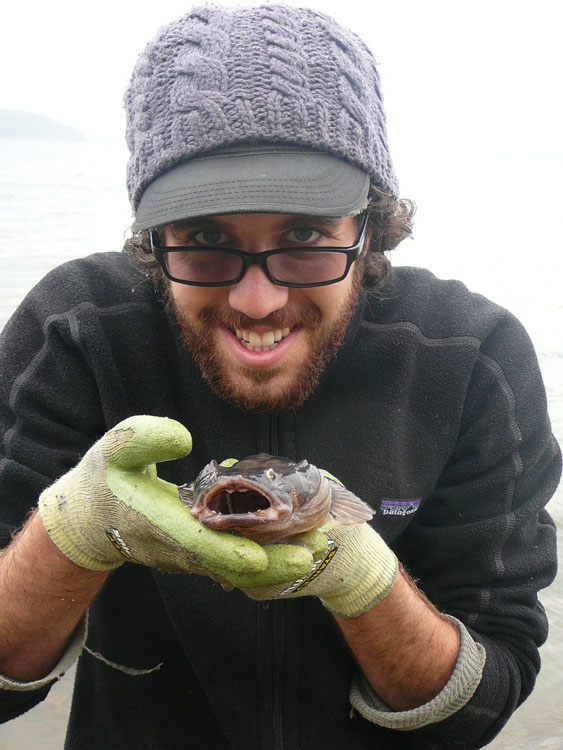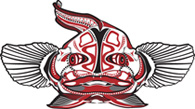


Robert
Mohr
University of Washington
Department of Psychology
408 Guthrie Hall
Seattle, WA 98195
mohr916@uw.edu

Biography
Rob Mohr was a UW Biology undergraduate researcher in the Sisneros lab
from 2009-2010. He joined the lab as a graduate student in the Fall 2011.
Rob graduated with a Ph.D. in Psychology (Animal Behavior) in Autumn 2017.
Currently he is employed at Amazon Spheres.
Research
Rob's research focuses
on the role of the swim bladder for sound reception and communication
in the plainfin midshipman. His work involves a combination of field work
and controlled laboratory experiments that investigates the neural basis
of communication in the soniferous midshipman.
Publications
Mohr RA, Chang Y, Bhandiwad AA, Forlano PM, and JA Sisneros. In Press. Brain activation patterns in response to conspecific and heterospecific social acoustic signals in female plainfin midshipman fish, Porichthys notatus. Brain, Behavior and Evolution.
Mohr RA, Whitchurch
EA, Anderson RD, Forlano PM, Fay RR, Ketten DR, Cox TC, and JA Sisneros.
2017. Intra- and Intersexual swim bladder dimorphisms in the plainfin
midshipman (Poricthyths notatus): implications of swim bladder
proximity to the inner ear for sound pressure detection. Journal of Morphology
278: 1458-1468.![]()
Coffin AB, Zeddies DG, Fay
RR, Brown AD, Alderks PW, Bhandiwad AA, Mohr RA, Gray MD, Rogers
PH and JA Sisneros. 2014. Use of the swim bladder and lateral line in
near-field sound source localization by fishes. Journal of Experimental
Biology. ![]()
Petersen CL, Timothy M, Kim
DS, Bhandiwad AA, Mohr RA, Sisneros JA, and PM Forlano. 2013. Exposure
to advertisement calls of reproductive competitors activates vocal-acoustic
and catecholaminergic neurons in the plainfin midshipman fish, Porichthys
notatus. Public Library of Science One 8(8):e70474![]()
Coffin AB, Mohr RA, and JA Sisneros. 2012. Saccular-specific hair
cell addition correlates with reproductive state-dependent changes in
the auditory saccular sensitivity of a vocal fish. Journal of Neuroscience
32:1366-1376.![]()
Last updated 1-25-18
